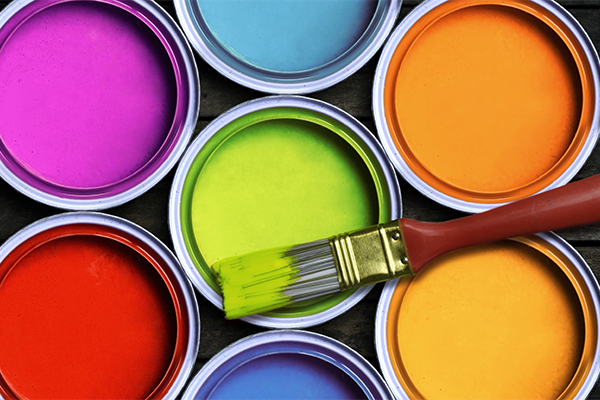Have you ever noticed a tiny chip in your car’s paint and thought, “Is this going to be a problem?” It can be frustrating, especially if you take pride in your vehicle’s appearance. A paint chip may seem minor at first glance, but it poses a challenge: if left unattended, it can lead to rust and additional damage. Fortunately, fixing these blemishes doesn’t have to be a daunting task. Let’s delve into some easy ways to mend paint chips on your car, restoring its pristine allure with a bit of finesse.
First, let’s understand what causes these annoying paint chips. Everyday wear and tear, road debris, gravel, and even minor accidents can bombard your car’s exterior. It’s not just the aesthetic damage that can be troublesome; paint chips expose the underlying metal to moisture and oxygen, accelerating rust formation. So, can we put a stop to this cycle of degradation? Absolutely!
### Assessing the Damage: The First Step
Before you jump into repairs, you need to assess the extent of the damage. Take a close look at the area surrounding the paint chip. Does it penetrate just the clear coat, or has it reached the color layer beneath? If the damage is solely superficial, a simple touch-up may suffice. Conversely, deeper chips that expose metal require more thorough restoration efforts.
Once you’ve evaluated the damage, gather your arsenal of tools. You’ll need some supplies: touch-up paint, a pen applicator or paintbrush, fine-grit sandpaper, clear coat, and perhaps some rubbing compound and wax for the finishing touches. Ready? Let’s get to work!
### Step-by-Step Guide to Repair Paint Chips
#### 1. Clean the Area
Before any repair, clean the damaged area meticulously. Use soap and water to remove dirt, grease, and wax. Dirt can obstruct your repair efforts, and a clean canvas ensures better adhesion of the touch-up paint. Once clean, make sure it’s completely dry.
#### 2. Prepare the Surface
For chips that have slightly raised edges, gently sand the area surrounding the chip with fine-grit sandpaper. This creates a smooth surface for the touch-up paint to adhere to. Be cautious not to sand too aggressively; you don’t want to cause additional damage!
#### 3. Apply the Touch-Up Paint
Now comes the fun part: applying the touch-up paint. If you’re using a pen applicator, carefully fill in the chip. If you’re utilizing a brush, dab the paint into the chip, ensuring that you don’t spread paint onto unaffected areas. Apply thin layers, allowing sufficient drying time between coats. It’s always better to apply multiple thin layers than one thick layer.
#### 4. Let It Cure
Patience is vital here. Allow the paint to cure as per the manufacturer’s instructions. Depending on the product, this can take several hours to a few days. Resist the urge to rush this process; a well-cured paint job results in a better finish.
#### 5. Apply Clear Coat
For an impeccable finish, apply a clear coat once the touch-up paint is entirely dry. This step adds protection and enhances gloss. Just like with the paint, apply the clear coat in thin layers and allow it to dry between applications.
#### 6. Polish and Wax
Finally, for that showroom shine, polish the area with a rubbing compound to blend the repair seamlessly with the surrounding paint. Following this, a good application of wax will provide additional protection against future wear and tear.
### Tips for a Pro-Level Touch-Up
Here are some additional tips to elevate your paint repair game:
- Color Matching: Finding the exact color match can be challenging. Refer to your car’s VIN or consult your dealer to get the right touch-up paint.
- Temperature Matters: Ideally, work in warmer conditions. Paint adheres better when temperatures are moderate, so avoid working in cold or excessively humid environments.
- Practice: If you’re a novice at painting, try practicing on a piece of scrap metal first. This will give you a feel for the application technique.
### When to Call a Professional
While many paint chips can be repaired with a DIY approach, some instances may require the expertise of a professional. If the damage is extensive or involves deeper scratches, seeking help might be the wiser choice. Professionals can offer specialized tools, advanced techniques, and access to high-quality paints that can revitalize your car’s appearance even further.
### Maintenance: Keeping Your Car Looking New
After repairing your car’s paint chips, maintaining its exterior is crucial. Regular car washes, waxing, and using protective coatings can minimize future damage. It’s all about creating a barrier against the elements that threaten your car’s beauty.
In conclusion, fixing paint chips on your car can be a straightforward task with the right approach. Equipped with this knowledge, you can address minor imperfections and extend the longevity of your vehicle’s exterior. So the next time you spot a paint chip, don’t shy away from the challenge—roll up your sleeves, grab your supplies, and get to work! Your car will thank you for it.
